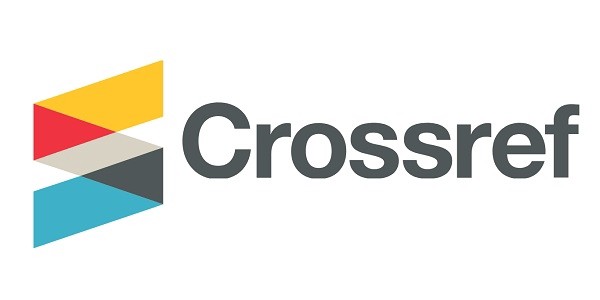Twin pregnancy in a patient with dilated cardiomyopathy
DOI:
https://doi.org/10.35954/SM2025.44.2.7.e503Keywords:
cardiomyopathy, dilated, pregnancy complications, cardiovascular, pregnancy, twin, myocardium /diagnostic imaging, stroke volumeAbstract
Introduction: There are few reports of women with dilated cardiomyopathy who have decided to become pregnant, as people with this condition are advised not to conceive. If this does happen, it must be carefully assessed by a multidisciplinary team due to the risk of cardiac failure, arrhythmias, and/or other complications that increase maternal and fetal morbidity and mortality.
Clinical case: We report the case of a 31-year-old patient with dilated cardiomyopathy, with a left ventricular ejection fraction of 38% on echocardiogram, who had a high-risk twin pregnancy.
Results: The pregnancy was terminated at 34 weeks, resulting in two newborns without pathologies and with good maternal evolution.
Discussion: Pregnant women with dilated cardiomyopathy and reduced left ventricular ejection fraction are at increased risk of complications such as heart failure, acute pulmonary edema, potentially dangerous arrhythmias, sudden death, premature delivery, and fetal death. In twin pregnancies, the risk is increased due to the greater increase in blood volume and the additional demand on the heart.
Conclusions: The assessment and monitoring of a pregnant patient with dilated cardiomyopathy should be carried out by a multidisciplinary team specializing in obstetrics and cardiology.
Note: This article was approved by the Editorial Committee.
Received for review: February 2025.
Accepted for publication: June 2025.
Correspondence: 8 de Octubre 3020, C.P. 11100. Tel.: (+598) 24876666 ext. 3330. Montevideo, Uruguay.
Contact email: anabelafm@telefonica.net
Downloads
Metrics
References
Sanghavi M, Rutherford JD. Cardiovascular physiology of pregnancy. Circulation 2014 Sep 16; 130(12):1003-8. https://doi.org/10.1161/circulationaha.114.009029 PMID: 25223771.
Owens A, Yang J, Nie L, Lima F, Avila C, Stergiopoulos K. Neonatal and Maternal Outcomes in Pregnant Women With Cardiac Disease. J Am Heart Assoc 2018 Nov 6; 7(21):e009395. https://doi.org/10.1161/JAHA.118.009395 PMID: 30571384.
Roos-Hesselink JW, Ruys TP, Stein JI, Thilén U, Webb GD, Niwa K, et al. Outcome of pregnancy in patients with structural or ischaemic heart disease: results of a registry of the European Society of Cardiology. Eur Heart J 2013 Mar; 34(9):657-65. https://doi.org/10.1093/eurheartj/ehs270 PMID: 22968232.
European Society of Gynecology (ESG), Association for European Paediatric Cardiology (AEPC), German Society for Gender Medicine (DGesGM), Regitz-Zagrosek V, Blomstrom Lundqvist C, Borghi C, et al. ESC Guidelines on the management of cardiovascular diseases during pregnancy: the Task Force on the Management of Cardiovascular Diseases during Pregnancy of the European Society of Cardiology (ESC). Eur Heart J 2011 Dec; 32(24):3147-97. https://doi.org/10.1093/eurheartj/ehr218 PMID: 21873418.
Regitz-Zagrosek V, Roos-Hesselink JW, Bauersachs J, Blomström-Lundqvist C, Scientific Document Group, et al. 2018 ESC Guidelines for the management of cardiovascular diseases during pregnancy. Eur Heart J 2018 Sep 7; 39(34):3165-3241. https://doi.org/10.1093/eurheartj/ehy340 PMID: 30165544.
Moghbeli N, Pare E, Webb G. Practical assessment of maternal cardiovascular risk. Congenit Heart Dis 2008; 3(5):308-16. https://doi.org/10.1111/j.1747-0803.2008.00207.x PMID: 18837808.

Downloads
Published
How to Cite
Issue
Section
License
Copyright (c) 2025 Anabela Fernández, Jorge Castelli, Ignacio Farro

This work is licensed under a Creative Commons Attribution-NonCommercial-ShareAlike 4.0 International License.
Until 2024 we use the Creative Commons Attribution/NonCommercial Attribution 4.0 International License https://creativecommons.org/licenses/by-nc/4.0/deed.es. Which states that: you are free to share, copy and redistribute the material in any medium or format, as well as to adapt, remix, transform and build upon the material. Under the following terms:
Attribution: you must give proper credit , provide a link to the license, and indicate if changes have been made . You may do so in any reasonable manner, but not in such a way as to suggest that you or your use is endorsed by the licensor.
NonCommercial: you may not use the material for commercial purposes.
As of 2025 authors retain their copyright and assign to the journal the right of first publication of their work, which shall simultaneously be subject to the license https://creativecommons.org/licenses/by-nc-sa/4.0/deed.es that permits sharing, copying and redistribution of the material in any medium or format provided that initial publication in this journal is indicated. Adapt, remix, transform and build upon the material. If you remix, transform, or build from the material, you must distribute your contribution under the same license as the original and may not make use of the material for commercial purposes.
Under the following terms:
1. Attribution: you must give proper credit, provide a link to the license, and indicate whether changes have been made. You may do so in any reasonable manner, but not in such a way as to suggest that you or your use is endorsed by the licensor.
2. NonCommercial: you may not use the material for commercial purposes.
3. ShareAlike: if you remix, transform or build upon the material, you must distribute your contribution under the same license as the original.
PlumX Metrics

























